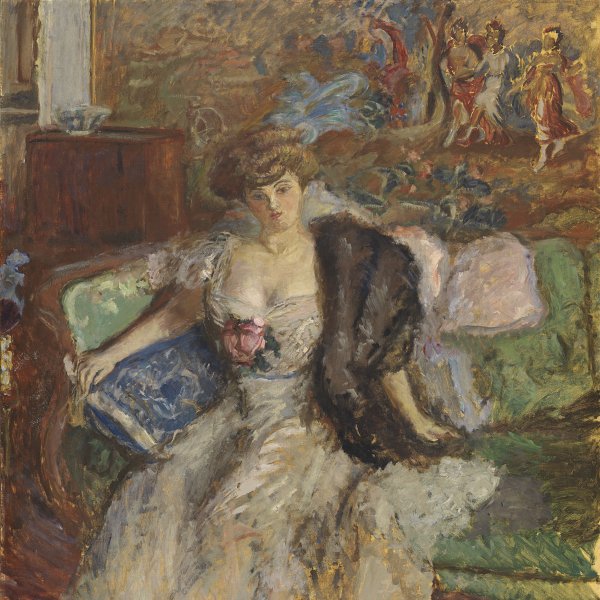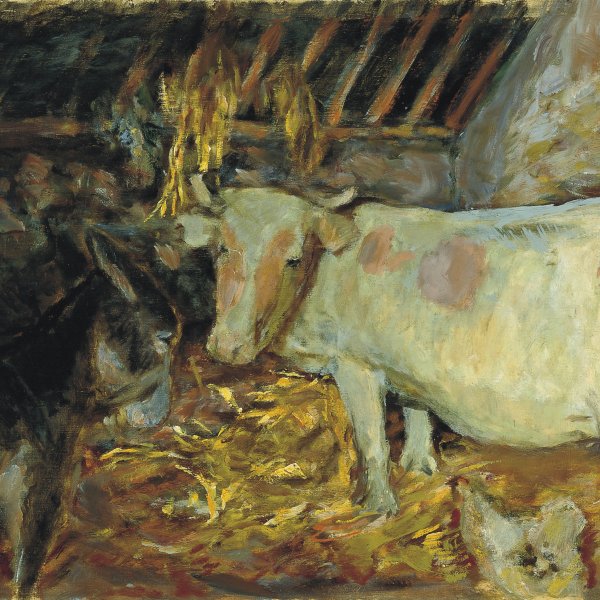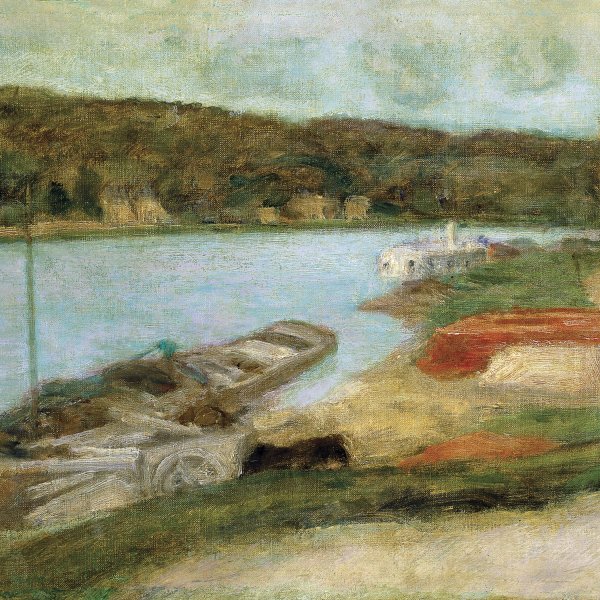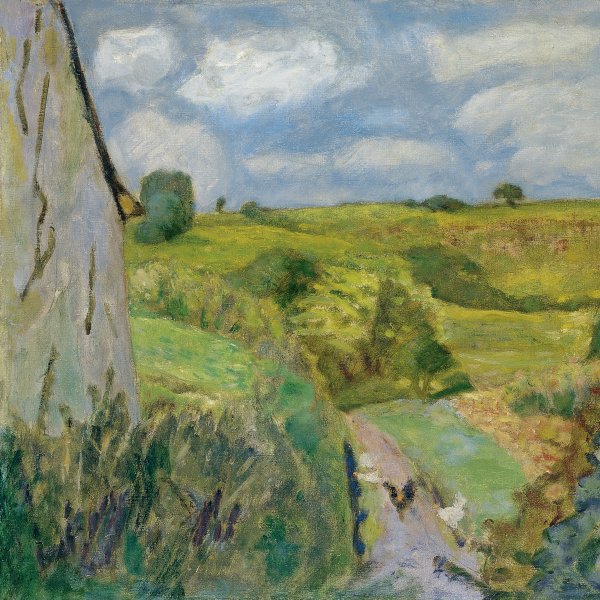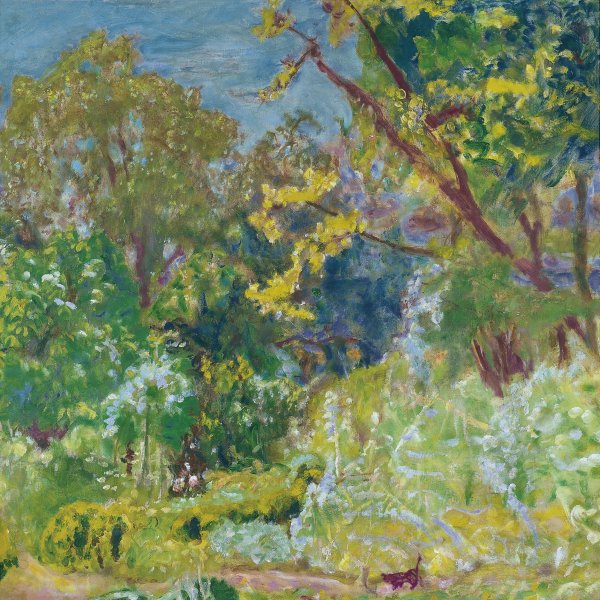Pierre Bonnard
Fontenay-aux-Roses, 1867-Le Cannet, 1947
The French painter, lithographer and photographer Pierre Bonnard was a member of the Symbolist group Les Nabis and later evolved towards a personal style linked to Impressionism. He studied law and began to work as a lawyer in 1889, combining this activity with drawing and painting classes at the Académie Julian from 1887. There he came into contact with Maurice Denis and also with Paul Sérusier, whose painting The Talisman, executed in 1888 (Paris, Musée d’Orsay) in accordance with the Synthetism of Paul Gauguin, was a revelation for Bonnard. The application of colour, distributed into broad areas, and the symbolism of Gauguin’s art, coupled with a taste for Japanese art, were adopted as a reference by the Nabis. Sérusier, Maurice Denis, Paul Ranson, Henri-Gabriels Ibels, Ker-Xavier Roussel and Édouard Vuillard took part along with Bonnard in their first joint exhibition in 1891. When Bonnard’s France-Champagne poster appeared on the walls of Paris that year, he decided to take up painting permanently and rented a studio in Montmartre.
The Nabis’ contacts led him to establish close ties with the theatre and, together with other members of the group, to design sets and costumes for plays such as Alfred Jarry’s Ubu roi, in 1896. Bonnard also designed stainedglass windows, furniture and textiles and illustrated books, newspapers and magazines, such as La Revue Blanche. He met many writers and prominent people of the day at the magazine’s offices, among them Misia, the wife of the publication’s editor Thadée Natanson, who became one of his favourite models.
At the beginning of the new century Bonnard made numerous trips around Europe, often accompanied by Édouard Vuillard. Away from the new Parisian trends in painting, he adopted a personal style that appeared to reinterpret the Impressionism of Renoir and Monet and on which the light and colour of the French Midi left a powerful imprint from 1909–10 onwards. The subject matter of his works became even more centred on private scenes and family portraits with a sensuous, expressive and decorative touch. During the last two decades of his life his work was shown in many exhibitions and he was recognised by artists such as Paul Signac, Henri Matisse and Georges Rouault.
The Nabis’ contacts led him to establish close ties with the theatre and, together with other members of the group, to design sets and costumes for plays such as Alfred Jarry’s Ubu roi, in 1896. Bonnard also designed stainedglass windows, furniture and textiles and illustrated books, newspapers and magazines, such as La Revue Blanche. He met many writers and prominent people of the day at the magazine’s offices, among them Misia, the wife of the publication’s editor Thadée Natanson, who became one of his favourite models.
At the beginning of the new century Bonnard made numerous trips around Europe, often accompanied by Édouard Vuillard. Away from the new Parisian trends in painting, he adopted a personal style that appeared to reinterpret the Impressionism of Renoir and Monet and on which the light and colour of the French Midi left a powerful imprint from 1909–10 onwards. The subject matter of his works became even more centred on private scenes and family portraits with a sensuous, expressive and decorative touch. During the last two decades of his life his work was shown in many exhibitions and he was recognised by artists such as Paul Signac, Henri Matisse and Georges Rouault.

